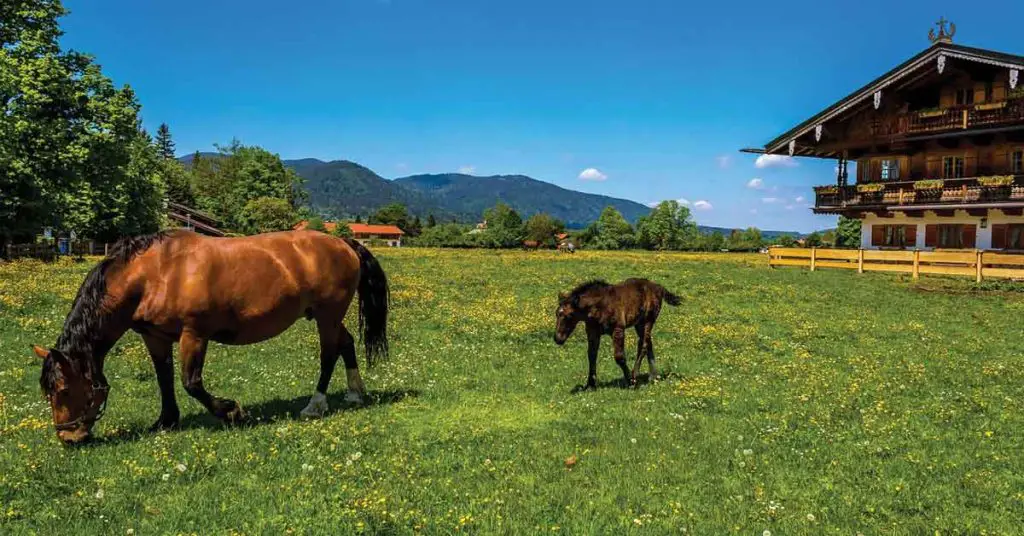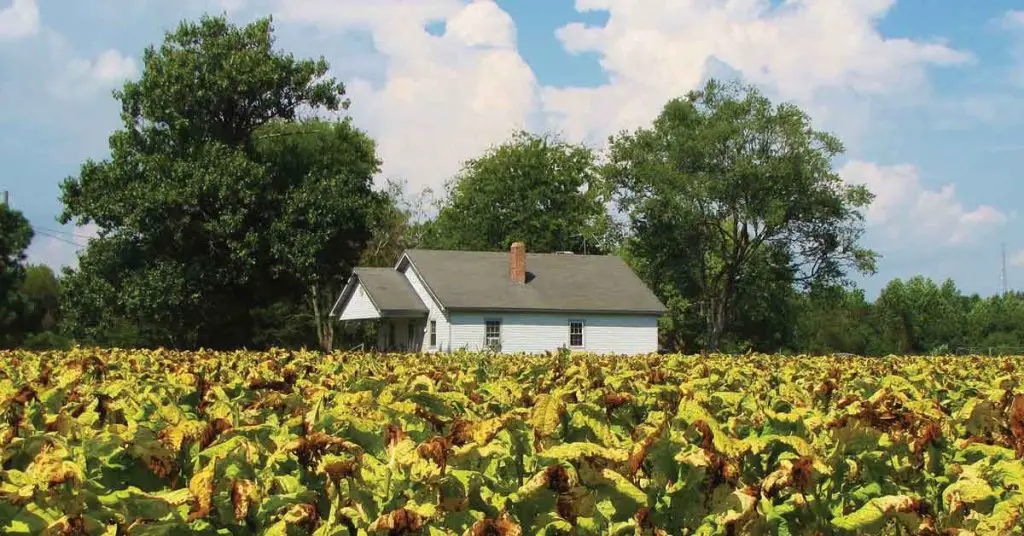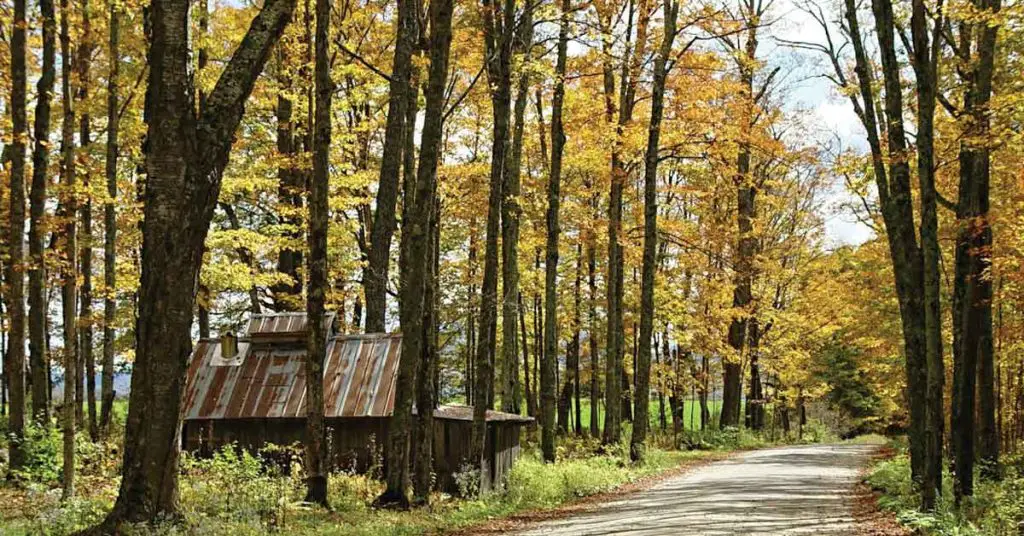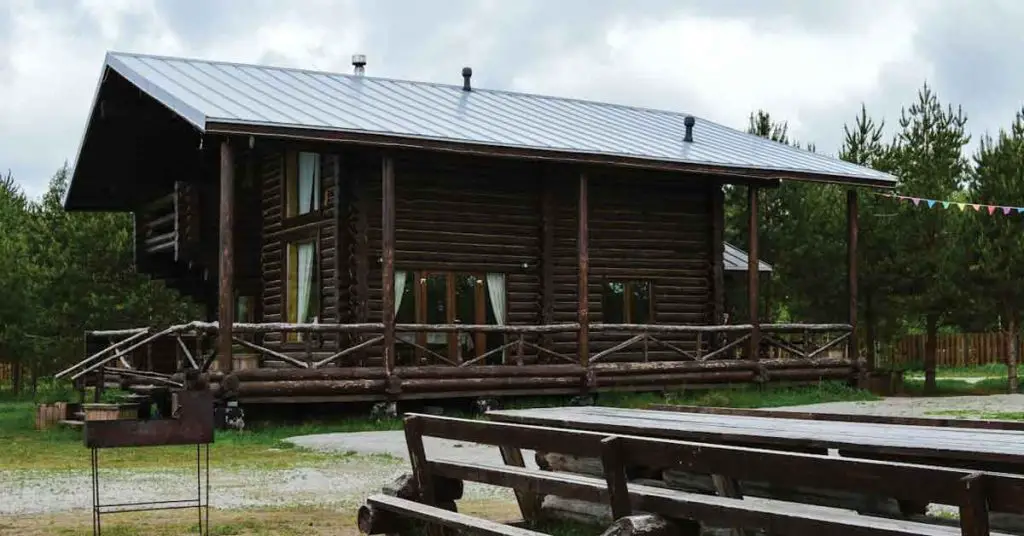Introduction
In this article, we will discuss the reasons for homesteading becoming popular in recent years.
Brief Overview of Homesteading
Homesteading, a time-honored tradition, has recently attracted a growing number of people drawn to a more straightforward, more sustainable way of life. Homesteading, once seen as a relic of the past, has made a stunning comeback, inspiring a new generation of people and families who want to get back in touch with nature and develop a stronger feeling of self-sufficiency. This article will go into the intriguing world of homesteading, examining its history, the factors fueling its comeback, and the different characteristics that appeal to many people as a way of life.
Growing Popularity of Homesteading
At its core, homesteading is a sustainable and self-reliant way of life where people or families try to produce a sizable amount of food, energy, and other essentials. This might entail various activities, such as gardening, livestock rearing, using renewable energy sources, and developing a variety of crafts and skills. Homesteading has become a tempting alternative for individuals looking for a more balanced and rewarding way of life as the globe struggles with issues like climate change, economic insecurity, and the emotional and physical toll of contemporary living.
Overview of Article Content
This article aims to give readers a thorough understanding of the world of homesteading by studying its historical origins, current applicability, and the essential elements that characterize this way of life. We will also discuss the difficulties prospective homesteaders face and provide helpful tools to assist those considering this excellent adventure. This article aims to explain the factors driving the increasing popularity of homesteading and arouse a deeper respect for this rewarding and sustainable way of life, whether you are an experienced homesteader, an interested urban dweller, or simply someone with a passion for sustainable living.
History of Homesteading
Homesteading originated in an era when individuals relied on their limited resources and talents to support themselves and their families. Explore the history of homesteading, the influential historical moments that shaped it, and the contemporary homesteading movement that has reignited interest in this time-honored way of life to comprehend the current revival of this way of life fully.
Origins and the Earliest Settlers
Since ancient times, homesteading has played a significant role in human civilization. Early agricultural societies were based on the values of independence and ingenuity; people farmed their land and produced food, tools, and other necessities. For instance, pioneers and settlers in North America (Mainly United States and Canada) were renowned for their independence and capacity to endure and flourish in hostile environments. These early homesteaders built and maintained their homesteads using their skills in agriculture, animal husbandry, and numerous trades.
The 1862 Homestead Act
In the history of homesteading in the United States, The Homestead Act of 1862 was a crucial turning point. The act, which President Abraham Lincoln signed into law, gave Americans free land to promote westward migration and spur economic growth. Individuals were assigned 160 acres of public property under the Homestead Act, but only if they pledged to reside there and work the land for at least five years. This legislation prompted a significant influx of settlers who seized the chance to establish prosperous settlements and start new lives on previously uninhabited terrain. The early homesteaders’ sense of independence and ingenuity is an example for contemporary practitioners.
Movement for Modern Homesteading
The desire to return to a more straightforward, sustainable way of life and a growing awareness of environmental issues propelled the development of the contemporary homesteading movement in the second half of the 20th century. The back-to-the-land movement of the 1960s and 1970s saw a new generation of homesteaders, influenced by the writings of Helen and Scott Nearing, pioneers of the modern homesteading movement, who documented their experiences in their book “Living the Good Life.” Many were inspired to give up the comforts of urban living and adopt a more self-sufficient lifestyle.
With a new generation of practitioners using the internet to share their information, experiences, and ideas, homesteading has become more prevalent in recent years. The principles of self-sufficiency, sustainability, and connection to the land that underlie homesteading resonate with an ever-increasing number of people seeking to live a more balanced, fulfilling, and environmentally responsible life as the world faces mounting environmental and economic problems and social challenges.
A rich tapestry of human creativity, flexibility, and tenacity can be seen throughout the history of homesteading. The persistent attractiveness of this way of life, from its prehistoric roots to the revolutionary Homestead Act of 1862 and the contemporary homesteading movement, is a monument to the inherent human yearning for independence, sustainability, and a closer relationship with nature.
Why Homesteading Is Attractive
Homesteading is becoming more and more popular because of a variety of elements that appeal to people with a wide range of experiences and backgrounds. Homesteading offers a distinctive and gratifying route that includes self-sufficiency, sustainability, well-being, financial freedom, and community ties as more people look for a way of life that fits their values and objectives. In this article, we will examine the numerous factors that make homesteading a desirable option for people looking for a more fulfilling and balanced life.
Desire for Self-sufficiency
The desire for independence and self-sufficiency is one of the most alluring features of homesteading. Homesteaders can become less dependent on other systems and have more control over their lives by growing their food, keeping livestock, and developing essential skills. In addition to being powerful, this feeling of independence encourages resiliency, ingenuity, and adaptation in the face of the difficulties and uncertainties of daily life.
Environmental Awareness and Sustainability
Many people are driven to homesteading to live in harmony with nature and lessen their ecological imprint as global concerns about climate change, resource depletion, and environmental degradation continue to rise. Homesteaders can contribute to a healthy planet by implementing sustainable techniques like organic gardening, permaculture, and renewable energy. This shows their dedication to environmental stewardship.
Physical and Mental Well-being
The homesteading lifestyle can significantly impact one’s mental and physical well-being. A stronger sense of purpose, contentment, and general pleasure can all be facilitated by engaging in meaningful, practical labor, spending time outdoors, and establishing a relationship with the land. In addition, the physical work required for homestead maintenance, such as gardening, caring for animals, and woodworking, helps people stay fit, strong, and resilient.
Economic Gains and Financial Independence
Although creating a homestead can require a sizable initial investment, the long-term financial advantages can result in increased financial security and freedom. Homesteaders can lower their living costs and become more resistant to economic swings by generating food, energy, and other essentials. A homestead’s skills and assets can frequently be turned into money through various avenues, such as selling extra food or crafts or giving courses and classes.
Relationships with Local Communities
Homesteaders frequently develop a sense of community and camaraderie because they have similar goals, values, and interests. Homesteaders can meet like-minded people, share expertise and ideas, and create enduring connections by participating in community activities, attending farmers’ markets, and posting on internet forums. These relationships enhance the homesteading experience and aid in the growth of resilient, strong local communities.
In conclusion, homesteading has appeal because it can satisfy various human wants and ambitions, from sustainability and self-sufficiency to well-being, financial independence, and communal ties. People can go on a transforming journey by adopting the homesteading lifestyle, which benefits them personally and acts as an inspiration and role model for a more peaceful, responsible, and rewarding way of life.
Important Homesteading Elements

The vast range of techniques and abilities that make up this gratifying way of life are what make homesteading so alluring. Homesteaders can build a healthy, sustainable sanctuary by mastering five essential elements, providing for their necessities while reducing their environmental effects. We will examine the critical components of homesteading in this article, from gardening and livestock management to energy conservation, food preservation, and handicrafts.
Farming and Gardening
Organic Techniques: Organic gardening focuses on using chemical-free, all-natural techniques to grow nutritious, healthful crops. Homesteaders may safeguard the environment, encourage biodiversity, and maintain the quality and safety of their food by avoiding synthetic pesticides and fertilizers. Crop rotation, composting, and integrated pest management are essential techniques.
Permaculture Techniques: Permaculture techniques aim to emulate the effectiveness and resilience of natural ecosystems. Permaculture is a holistic approach to land management. Homesteaders can build autonomous systems that need little maintenance by planning their gardens and farms to maximize productivity, save resources, and limit waste. The importance of diversity, appreciating renewable resources, and monitoring and imitating natural patterns are only a few of the fundamental ideas.
Livestock Control
Raising Animals for Food and Resources: Homesteaders who grow animals can benefit from a reliable source of food and other resources like wool, hides, and dung. Chickens, ducks, bunnies, goslings, sheep, and pigs are typical domesticated animals raised on homesteads. Homesteaders can maximize the output and effectiveness of their livestock enterprises by carefully choosing breeds appropriate for their environment, available area, and demands.
Natural and Humane Methods: Homesteaders frequently prioritize the welfare of their animals, using natural and humane methods to safeguard their well-being. This entails creating roomy, spotless living quarters, providing a healthy diet suited to the species, and reducing stress through tactful handling and low-stress management strategies.
Energy Efficiency and Renewable Sources
Solar energy: Homesteaders can reduce their reliance on finite resources and carbon impact by using solar energy. While solar water heaters can supply hot water for domestic and agricultural uses, solar panels can produce power for home usage.
Another sustainable energy choice for homesteaders is wind power, which wind turbines produce. Depending on the area and available wind resources, small-scale wind systems can help augment or replace grid-based ability.
Homesteaders with access to a dependable water supply, such as a stream or river, may consider hydroelectric power a feasible renewable energy option. Micro-hydro systems produce electricity from the movement of water, making them a reliable and clean energy source.
Food Storage and Preservation
Fruits, vegetables, and meats can be preserved using the famous canning technique by being sealed in airtight jars and heated. Homesteaders can take advantage of their crops all year long thanks to this method, which increases the shelf life of perishable foods.
Food is preserved by fermentation, which promotes the growth of good bacteria that create lactic acid and stop the growth of destructive species. The most popular fermented foods include kimchi, yoghurt, kombucha, and sauerkraut.
By removing moisture from food, dehydration prevents the development of bacteria and mold. Fruits, vegetables, and meats that have been dehydrated may be kept for long periods without refrigeration, making them perfect for homesteaders looking to use as little energy as possible.
Do It Yourself (DIY)
Woodworking: A solid understanding of this trade enables homesteaders to construct, maintain, and repair various structures and objects on their land. Woodworking is a valuable skill that promotes independence and resourcefulness. It may be used to build raised flower beds, fences, furniture, and cabinets.
Sewing and knitting: Homesteaders may make and repair clothing, blankets, and other textiles using sewing and knitting abilities. Homesteaders can avoid waste, save money, and show their individuality by making clothes and household goods.
Pottery and blacksmithing: These are two traditional skills that can enhance a homestead’s level of artistry and self-sufficiency. Blacksmithing enables manufacturing tools, hardware, and other metal goods, whereas pottery can produce both practical and attractive ceramics. Both crafts can generate cash for homesteaders who want to market their goods.
In conclusion, sustainable and self-sufficient living can be attained through various activities and abilities that make up the critical elements of homesteading. Homesteaders may create a vibrant, resilient, and environmentally responsible sanctuary that meets their needs, promotes their well-being, and links them to the natural world and their local communities by embracing these various features.
Obstacles for Homesteading
Although there are many advantages to homesteading, there are also several difficulties that prospective homesteaders must be ready to face. Homesteaders must be resourceful, adaptive, and committed to conquering these challenges, which range from initial investments and time commitments to balancing contemporary luxuries and coping with legal limits. Homesteaders’ most frequent problems are covered in this article, along with advice on how to solve them.
Initial Expenses and Setup Costs
A sizeable initial investment is needed to set up a homestead, including the price of buying land, building or remodeling structures, buying tools and equipment, and creating gardens and animal facilities. Aspiring homesteaders should think about starting small, concentrating on the essential aspects, and gradually expanding as their knowledge and finances increase. Reusing and upcycling materials, trading goods and services, investigating government grants and subsidies, and bartering further ease financial constraints.
Commitment of Time and Steep Learning Curve
Homesteading requires a sizable time investment and the determination to pick up and perfect a variety of skills. The learning curve can be steep, especially for people new to these disciplines, in anything from gardening and animal husbandry to woodworking and food preservation. Aspiring homesteaders can connect with seasoned professionals who can provide advice and support and seek out educational resources like books, workshops, and online forums to help with the shift. Prioritizing duties based on seasonal demands and setting reasonable goals and expectations can also assist in managing the burden.
Keeping Traditional Values and Modern Conveniences in Balance
Finding the ideal balance between contemporary comforts and traditional, self-sufficient traditions is one of the challenges of homesteading. While some homesteaders could prefer to eschew many modern conveniences in favor of a more primitive way of life, others might incorporate technology and contemporary solutions to increase their productivity and efficiency. Homesteaders should consider their own values, priorities, and resources in addition to the potential effects on their total self-sufficiency, sustainability, and well-being to strike the correct balance.
Zoning and Legal Limitations
Homesteaders may face considerable obstacles due to legal and zoning constraints, particularly in urban and suburban locations. Aspiring homesteaders must do their homework and familiarize themselves with local laws and ordinances because regulations governing land use, building codes, livestock management, and other aspects of homesteading may differ significantly by place. It’s essential to check that the property satisfies the necessary zoning criteria and to keep up with any changes to local laws when choosing a homestead location.
Even though there are genuine and frequently overwhelming difficulties associated with homesteading, these difficulties can be overcome with tenacity, resourcefulness, and a dedication to lifelong learning. By acknowledging and confronting these problems head-on, aspiring homesteaders can create the conditions for a fruitful and satisfying journey towards self-sufficiency, sustainability, and a closer connection to the land and their local communities by acknowledging and confronting these problems head-on.
Resources for Future Homesteaders
Homesteading may be exhilarating and overwhelming at the same time. Fortunately, there are many resources accessible to would-be homesteaders who are looking for information, motivation, and assistance as they establish their dream lifestyle and develop their abilities. This article will look at various tools, including books, online forums, courses, and influencers, that might help individuals just starting out on the homesteading adventure.
Books and Publications
Homesteading-related books and publications offer a wealth of knowledge on the several facets of this way of life, from gardening and livestock management to food preservation and renewable energy. Several well-known and enduring books include:
- “The Encyclopedia of Country Living” by Carla Emery
- “The Backyard Homestead” by Carleen Madigan
- “The Self-Sufficient Life and How to Live It” by John Seymour
In addition to literature, homesteading periodicals like Grit and Mother Earth News provide helpful tips, motivational tales, and the most recent developments in sustainable living.
Online Communities and Forums
Aspiring homesteaders can interact with people who share their interests and values through online forums and communities. These online forums allow people to ask questions, share their stories, and exchange concepts and information. Popular online communities and forums include:
Local Classes and Workshops
Local workshops and classes provide practical learning opportunities that might aid ambitious homesteaders in honing their skills and gaining self-assurance. Community organizations offer courses and classes on various homesteading issues, including cooperative extension offices, agricultural centers, and permaculture groups. Additionally, some homesteaders run workshops or apprenticeships, offering beneficial chances to study under seasoned professionals.
Homesteading Bloggers and Influencers
Influencers and bloggers specializing in homesteading provide a personal and approachable perspective by sharing their accomplishments, setbacks, and insights on numerous online platforms. Through blog articles, videos, and social media updates, these people frequently offer helpful guidance, instructions, and motivation. Several well-known homesteading bloggers and influencers include:
- Justin Rhodes (YouTube Channel: Justin Rhodes)
- Jill Winger (Blog: The Prairie Homestead)
- Amy Stross (Blog: Tenth Acre Farm)
Finally, the abundance of materials available to would-be homesteaders guarantees that help, direction, and inspiration are always close at hand. By utilizing these many resources, people can connect with other like-minded people who share their enthusiasm for self-sufficiency, sustainability, and a more rewarding way of life and acquire the information and skills required to create a thriving homestead.
Recap: Homesteading Becoming Popular
The popularity of homesteading is rising, as we’ve discussed throughout this article, which is evidence of the many advantages this way of life offers. Homesteading offers a chance to develop a purposeful, happy, and responsible way of life, from self-sufficiency and environmental sustainability to personal well-being and communal ties.
Explore the Homesteading Lifestyle
We encourage readers interested in learning more about the homesteading way of life to use the many tools, information, and resources out there to help you along the way. You can join the expanding homesteading movement by taking advice from others’ experiences and steadily enhancing your abilities and self-assurance.
Homesteading Movement in the Future
Future prospects for a more sustainable, resilient, and interconnected world are very bright due to the homesteading movement’s continuous growth. We may collectively work towards a future where our actions are in harmony with the natural world and our fellow residents as more people decide to value self-reliance, environmental stewardship, and local community engagement.
In conclusion, there has been a significant change towards a more aware, sustainable, and fulfilling way of life, which is reflected in the rising popularity of homesteading. By embracing homesteading values and methods, we can all contribute to a better, more resilient future for ourselves, our communities, and our planet.
Disclaimer: The information provided in this article is for general informational purposes only and is not intended to be a substitute for professional advice. The author of this article does not claim to be an expert in homesteading and the information provided should not be relied upon to make decisions about your own homesteading journey. Please do your own research and consult with a qualified professional before making any decisions about your homestead.
Share via:
Shaun Alexander is the main writer and editor for HomesteadingSimple.com. With a strong passion for homesteading and sustainability, Shaun has dedicated his life to learning and sharing information about a simple, fulfilling existence tied to the land. His expertise ranges from gardening and livestock management to off-grid living and DIY projects, reflecting the diverse skills necessary for a successful homesteading lifestyle. Shaun’s goal is to inspire and educate others about the possibilities of homesteading, whether in rural, suburban, or urban settings, and to provide practical advice and tips for both beginners and seasoned homesteaders. He believes in a future where more people return to their roots, embracing a life of self-sufficiency and harmony with nature.





